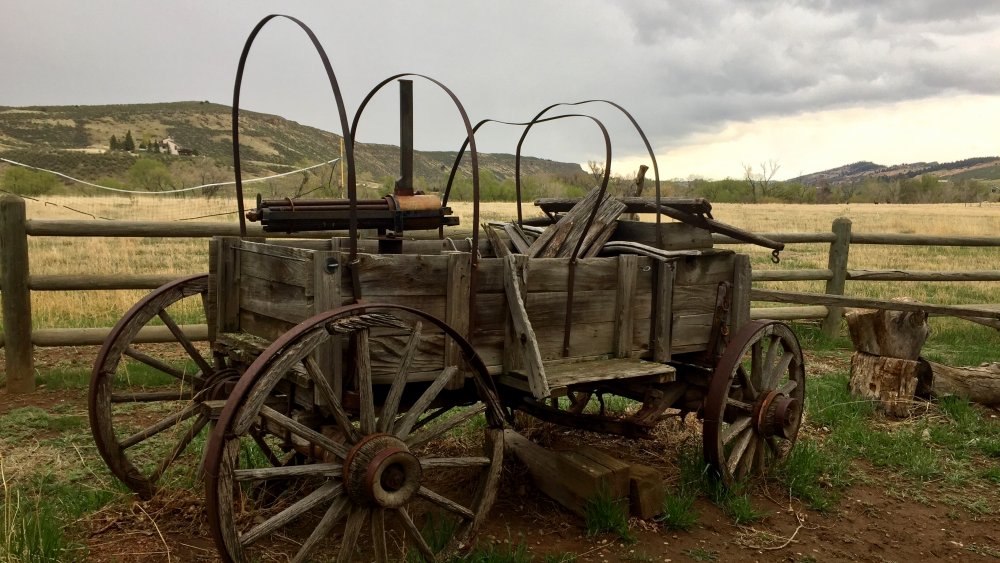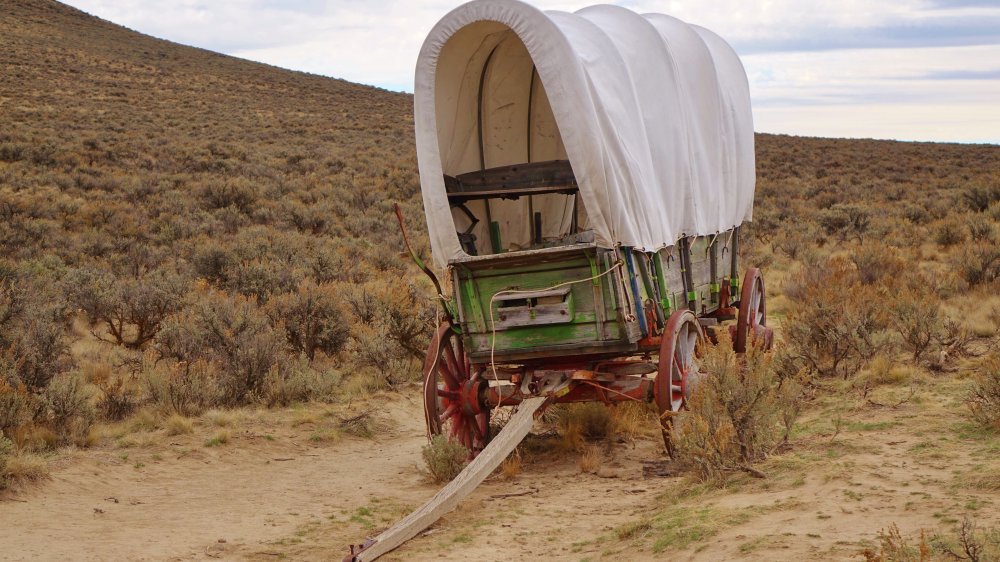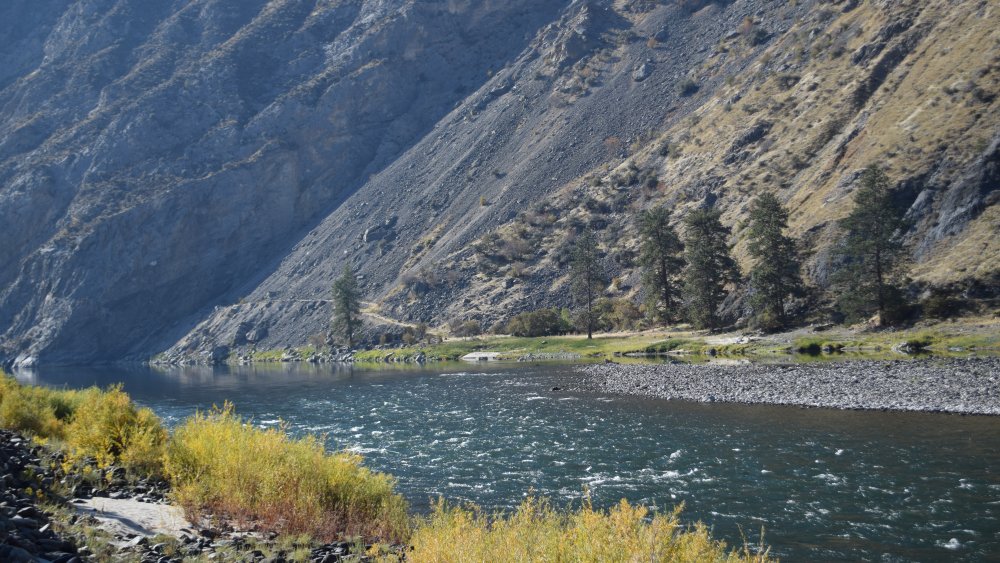Inside The Utter-Van Ornum Massacre On The Oregon Trail
Considering what you learned in history class, you might be surprised that attacks between settler-colonizers and American Indians were few and far between on the Oregon Trail. Only 362 of these settlers were killed between 1840-1860 along the trail, compared to the many thousands who made it through unharmed. To give you some perspective, 426 people indigenous to the lands along the trail were killed by the settlers. And, you know, they lived there.
Most of the time the American Indians posed no problem for travelers at all and were known to trade with them, swapping pelts and traditional dress for the settler's clothes, knives, etc. There was a list of tribes the travelers might encounter along the trail, including the Sioux, Kiowa, Shoshone, Crow, and others. According to Michigan State University, the majority of death and misfortune didn't come from aggressive altercations but from wagon accidents, drownings, diseases such as cholera, etc. Yes, a bunch of people died from dysentery, so that old Oregon Trail computer game had some merit. There was also a very unpleasant scourge of milk sickness on the Oregon Trail. Still, that doesn't mean that they were all singing Kumbaya together each night and getting along all hunky-dory. This was Manifest Destiny after all. You go around just calling dibs on everything you see because God told you you could, and naturally disputes will arise. On the rare occasion there was an altercation between settlers and Indigenous people, it could turn deadly, and none were as deadly as the Utter-Van Ornum Massacre.
The deadliest wagon train on the trail
The problem wasn't white fur traders or evangelicals that traveled the Oregon Trail. The issues that sparked most American Indian attacks were white aggression and land theft. It wasn't until white people began to push the indigenous people off their lands that they retaliated. In the rational world, that's what a "resistance" looks like. The native people were fighting back against their own displacement and genocide, and some arguably innocent victims got caught in the crossfire. The Utter-Van Ornum Massacre was one such incident.
The Utter-Van Ornum party was composed of 44 people, including 21 children, traveling west. They were heading through Idaho at the time they were attacked. The attack came in waves. The first was repelled after the Utter-Van Ornum party formed a defensive position. They left much of their livestock behind in hopes it would prevent further attacks. It didn't. The oxen who pulled their wagons were injured, weary, and easily caught up to. The second attack did more damage, and the survivors had no choice but to abandon their goods and run. The Washington State Historical Society says at least seven were killed along the road, but many more would die before being rescued. The final death toll makes the Utter-Van Ornum party the deadliest on the Oregon Trail. The initial attack left 11 settlers and 25-30 Native Americans dead, and many more members of the Utter-Van Ornum party would die before rescuers could get to them the following month.
The survivors turned cannibal
Those who initially survived the attacks booked it out of there with nothing but what they were wearing and a few guns. Well, except for the wife and three kids in the Utter family, who, for some reason, stayed back with their wounded pa. They turned one death into five deaths with a single decision. The survivors traveled over 75 miles on foot through the course of a week. This wasn't a paved sidewalk with 7/11s and a Taco Bell on every street corner. This was the harsh, preindustrial wilderness, and the majority of the survivors were children. They were starving.
The group couldn't go on a single day longer, so they hunkered down and made camp in hopes they'd survive long enough to be rescued. They traded the last of their possessions to a couple of Shoshoni Indians in exchange for some salmon. It was enough to give a handful of them the energy they needed to wander off in an attempt to find help. They found the opposite. The adults and older boys on the mission were killed, and the four younger children were captured. Meanwhile, at the camp, the Idaho Chapter of the Oregon-California Trails Association says the survivors were dropping like flies from starvation. The remaining survivors didn't have a whole lot of choice; they had to eat the dead or starve themselves. They chose cannibalism. It was the smarter choice. When the group was rescued, only 15 survivors out of 44 remained.


